Environmental Art for Interior Spaces: Local Artist Susie Frazier
We’re thrilled to connect with Susie Frazier, Cleveland artist who engaged in sustainability even before it was cool. As the interview unfolds, you’ll quickly realize that Susie’s genuine passion for natural materials as early as childhood has sustained her impressive artistic life.
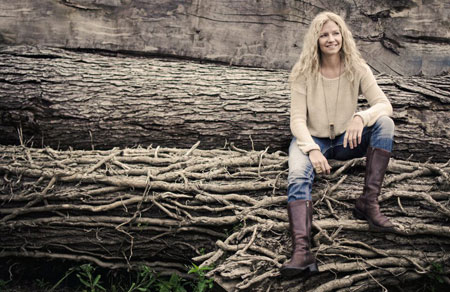
gpidesign: Do you have a personal design philosophy that unifies your artistic creations, or does each piece have it’s own inspiration and ideology?
Susie Frazier: Anything designed under my brand, whether it’s fine art, home furnishings, or fashion accessories, is born from three guiding principles: The work has to be resourceful, natural and down to earth.
It’s not enough to transform organic or industrial elements into something new. What matters to me is that I’m creating unpretentious objects that ultimately soothe the soul. Through simplified forms, muted earth tones, and organic patterns, my collection of art products evokes a sense of calm despite the chaos of life. And by embracing weathered, distressed textures, I’m defining a mindset that believes real beauty comes from the imperfections.
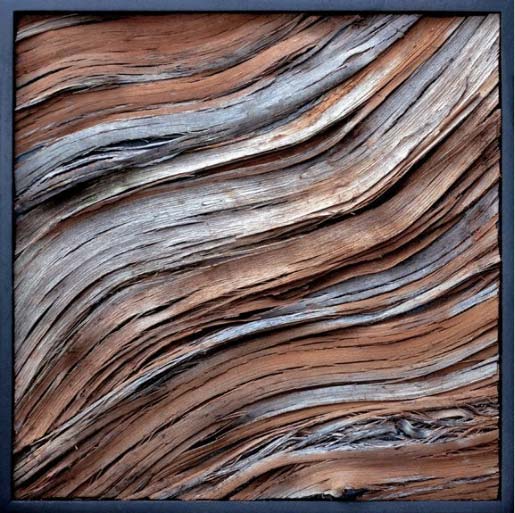
gpidesign: What inspired you to use nature as your artistic medium?
Frazier: The idea of designing with cast-off materials is something that’s been a family tradition since I was a child growing up in the American Southwest. There were times when my mother didn’t have a lot of means, so she taught us to be creative by salvaging what was readily available. For years, the only shelves in my bedroom were actually orange crates discarded from the local grocery store. Our living room coffee table was actually an old wooden gate mounted on four wood posts. Natural things like tree stumps, dried branches and pine cones were all on decoration rotation for decades.
Then, in 1997, I discovered the work of Andy Goldsworthy. I marveled at the mesmerizing patterns and forms he created in outdoor environments using nothing but raw materials he found on site. I remember thinking to myself how powerful that would be to create portable pieces with similar patterns but intended for interior environments. I thought if people could experience that beauty every day when they came home from work or school, maybe it would help them see the world in a different way. As I launched my career that same year, I realized just how comfortable I felt with the process of transforming discarded earth elements into something meaningful. It was like coming home. Of course, that was before the term “going green” was coined, so I had to do a lot of educating about organic matter as a viable medium.
gpidesign: Do you think the shift towards sustainability will influence other artists to explore the benefits of natural materials?
Frazier: I definitely think our culture’s embrace of a greener lifestyle over the past fifteen years has influenced other artists, particularly those who are younger and don’t know any other way of living. While social concern for the environment made its way into pop culture as early as the late 1960s, it’s encouraging to see today’s artists taking the movement even farther by developing work that’s truly sustainable in its construction vs. creating work that’s just conceptualizes or politicizes sustainability issues. At a certain point though, sustainable measures will stop being considered “special features” and will eventually become the standard by which all things in modern society are created. Until then, I’m glad to know my work has contributed, on some level, to a shift in thinking about the benefits of nature’s beauty.
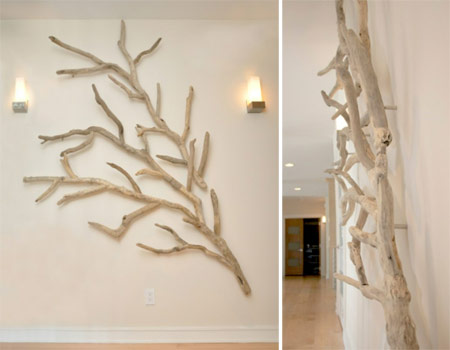
gpidesign: Are the wood elements for your framed displays and sculptures personally collected, or received from an outside source?
Frazier: Most of the earth fragments found in my fine art are collected by me while I’m wandering the beaches and forests of Ohio and Pennsylvania. Occasionally, I order from an outside supplier if I learn about a new medium with which I’d like to experiment, but I’ve taken great care to prioritize the use of materials and production partners that are right in my back yard.
I’m fortunate enough to have found a master woodworker in Cleveland who still works in the original shop his father established 50 years ago. The beauty of doing business with him is not only the vast knowledge he’s developed around his craft, but his meticulous storage of wood scrap that’s been saved through the years. Whenever I need frames or fixtures built, he scours through his decades-old stash in order to make use of what’s already on hand. It’s totally satisfying to know we aren’t resorting to freshly-milled lumber when there’s so much that can be repurposed.
When it comes to my home decor products, I’ve taken a similar but different approach. Because Cleveland has such a rich history in manufacturing, there’s a fairly strong market here for industrial salvage. Thankfully, I’ve been able to tap into an active supply chain in which weathered wood and steel cutoffs are by-products of other activities, so they’re set aside and sold as scrap. By leveraging the skills of local welders and woodworkers, I’ve been able to produce my designs in higher quantities, so far, without facing the downsides of far-away fabrication.

gpidesign: What statement do you hope to make to other artists and designers about vernacular design using local materials?
Frazier: One point I hope my story conveys to other artists is that meaningful design doesn’t necessarily come from any formal training or a pulse on the latest trends. It comes from the hard work of defining our ideals, immersing ourselves in our environment, learning about materials that are in surplus around us, and adapting local expertise into our processes. Indigenous people have lived by theses principles of vernacular design for centuries with great success. On so many levels, society benefits when manufacturing and consumer choices are made inside the constraints of what’s available vs. what’s possible simply because we can.
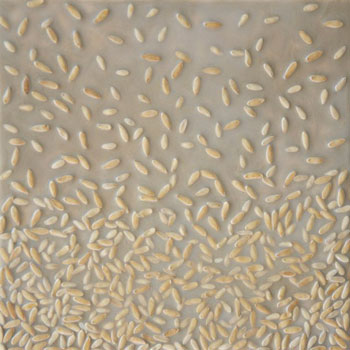
gpidesign: Oftentimes, the process behind a design is almost as innovative as the design itself. Do you have an experimental stage in which you try different patterns of wood varieties before settling on a final arrangement?
Frazier: One of the more interesting aspects of my fine art is the use of an ancient medium, called encaustic painting, whose roots date back thousands of years. When natural beeswax, crystalized tree sap, and colored pigments are melted together, the resulting liquid can be applied in heated layers to create colorful, natural works of art. In my case, I position the textural fragments in patterns as the dominant elements and let the encaustic fill in around it. The result is a durable and archival means of adhering and sealing those specific earth patterns together forever.

gpidesign: Are your designs crafted for specific clients?
Frazier: Historically, I focused a lot of time on commission-based work for business-to-business clients like designers and architects. It’s definitely thrilling to see my work in public spaces and know people are positively affected by their exposure to it.
But, since I’ve launched several product lines through my online store and retail showroom in Cleveland’s Gordon Square Arts District, I find my attention turning more to consumer transactions and licensing options as a way to grow my brand. Ultimately, the various audiences attracted to my work all share one thing in common: a deep appreciation for the earth and a desire to find ways to connect to it.
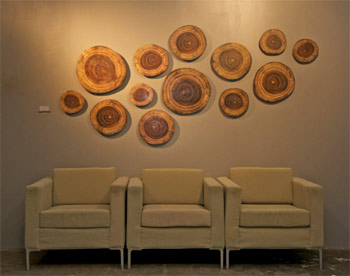
You can visit Susie’s gallery showroom this Friday, June 15th between 5pm and 9 pm. If you stop by, leave a comment here letting us know which of her works piqued your interest and why!
Susie Frazier Showroom
78th Street Studios Building
1305 W. 80th Street, Suite 111
Cleveland, OH 44102
Image credits: Susie Frazier
